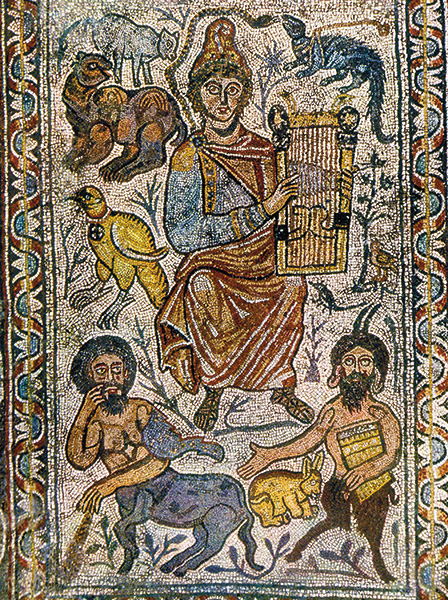Image Details

Zev Radovan/www.biblelandpictures.com
A LYRE THAT CHARMED THE WORLD. Discovered in the courtyard of a Jewish house northwest of Damascus Gate, this Orpheus mosaic is one of the few pieces of evidence from Byzantine Jerusalem that testifies to the survival of pagan, classical traditions after the Roman Empire’s conversion to Christianity. However, some scholars argue that in this mosaic, Orpheus was actually meant to represent Christ. Dating to the sixth century, the Orpheus mosaic decorated the floor of what was once a funerary chapel. Orpheus is seated, playing a multi-stringed cithara or lyre. Drawn by his music, animals—a viper, mongoose, lamb, bear, eagle, mouse, rabbit, owl and birds—flock to the musician. Beneath Orpheus, a centaur and Pan, who also holds a musical instrument, accompany the group. A legendary musician and poet from Greek mythology, Orpheus is best known for his ability to charm anyone or anything—living or dead—with his music.
